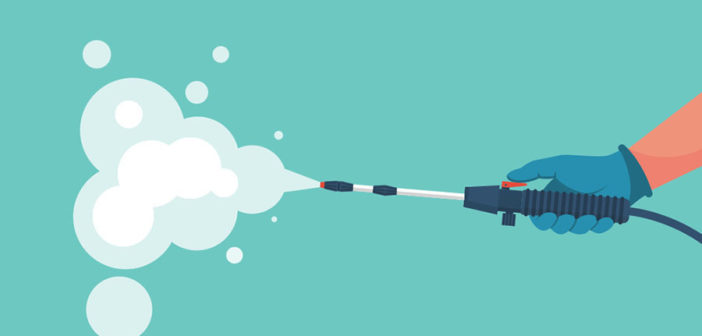There’s no doubt the COVID-19 pandemic has changed the way people travel. With that in mind, hoteliers are adapting to evolving needs.
by ALICIA HOISINGTON
It wouldn’t be an overstatement to say the past few months have been a whirlwind for hoteliers as they navigate a new normal during a time when travel has essentially stopped. After many owners had little option but to close some of their hotels amid swooping occupancy declines, the thought then became “What’s next for my business?” And that’s just the question AAHOA Members spent the past three months trying to answer.
AAHOA Member and Past Chairman Bhavesh Patel, principal of ADM Hotels & Development, had been operating on a limited basis, with about 10 percent of his hotels open and the majority of his staff furloughed or laid off.
“We’re in a county which is mostly tourism, and we have no occupancy,” Patel said. “Unless some of the tourist places open up, we’re not going to have any business.” As of May, he said there was no business on the books.
But that doesn’t mean hoteliers aren’t looking toward – and looking forward to – some kind of recovery. With the future top of mind, they are working to update their operations to meet the needs during a new era that places cleanliness at the forefront, even more so than it was in the past. Here’s how some AAHOA Members that Today’s Hotelier has been following since the onset of the COVID-19 pandemic are adapting their business.
TRAINING AND SAFETY
Training and safety will go hand in hand even more in the days ahead, and hoteliers are making sure their employees are taking the matter as serious as it is. Of course, that’s not always easy to do when things are changing so rapidly.
“From a training perspective, it’s evolving every day,” AAHOA Member Shreyas “JR” Patel, President and COO of Helix Hospitality, said. “When parameters are set, it’s as much to keep the team and guests safe as it is letting people know that we are keeping them safe. As days go on, we’re going to start to see folks a little more confident to travel.”
That means it’s not just about doing but also showing how tasks are being done. “We need to show what we’re using to clean and sanitize. I can say I use corporate yellow cleaners from X, Y, Z company, but that’s not always relatable to consumers,” JR Patel said. “I can show something that is visually relatable to the consumer as something they may have in their home, such as this is an X-branded bleach product that the consumer is familiar with and it kills 99.9 percent of bacteria. We can show that with something as simple as a card on the desk that this room was sanitized, explain what we used, and then a name of who cleaned it to show attention to detail.”
AAHOA Member Montu Patel, President of Innovative Hospitality Management, said the teams at his hotels are cleaning common areas on an hourly basis. Extreme precautions are also taken in the guestrooms, with staff not entering when guests are in. Stay-over guests are asked to put their laundry outside or whether they would be willing to exit the room for a while for cleaning. Masks and gloves are provided for team members, and all the appropriate sanitizers are used throughout the property.
“Guests don’t always know that we sanitized the rooms like this even before COVID-19. We use commercial products that sanitize the room, and we’ve done it for decades,” Montu Patel said, adding that he agreed there might be a need for a bit of a “PR campaign” from the brands and hotels to help explain to guests about the practices.
“But, by and large, these are not drastic new measures,” he said. “While there may be some new hot marketing things the franchisor comes up with, that’s more marketing driven. The fact of the matter is that before COVID-19, our rooms were sanitized and cleaned appropriately. Post-COVID-19, those measures are just getting a refresher.”
SAFE STAY
And brands certainly have come out with their own commitments to cleanliness, many of them teaming up with medical associations to add another layer of credibility. In a move to unify the hotel industry on these practices, the American Hotel & Lodging Association launched the Safe Stay initiative designed to change industry norms, behaviors, and standards to ensure both hotel guests and employees are confident in the cleanliness and safety of hotels once travel resumes. AAHOA is part of the Safe Stay Advisory Council.
Bhavesh Patel said part of the plan includes reopening parts of the operations in phases. For instance, breakfast probably won’t be brought back this year but perhaps possibly next year. Beyond that, it’s all about going above the normal standards.
“In our lobby and public spaces, we’re moving all chairs and tables so that there’s no social gathering,” he said. “We added safety shields for the front desk, as well as provided masks and gloves, and we’re making sure things like elevator buttons are being wiped down. We’re also leaving rooms empty for a few days, if possible, so they can be aired out.”
RAISE THE STAKES
But upping the standards comes with the need to raise the stakes on training teams. “A lot of it has to do with incorporating standard social distancing practices and this concept of new normal with things like not shaking hands,” JR Patel said. “We’re really getting into the day-to-day operations and getting people to realize how many surfaces they’re touching throughout the day and why they need to wash their hands.”
That extends to common touch points, he added. For example, he said it’s important for employees to truly understand that areas such as coffee stations will require more sanitization because they are touched so often. And then, it’s imperative to make sure team members are using the chemicals correctly, as he said some need to sit up to 60 seconds before being wiped down.
“It’s changing the mindset of folks in terms of what we perceive is clean and what is actually clean,” he said. “It’s realizing that in our daily lives, people are the medium spreading the virus. So, employees need to learn how to compartmentalize, from taking out the trash from rooms to removing linens.”
For his team, much of the training is happening one on one. “Because this is so new, we have had to be more reactionary than proactive. This is the new normal, and this is going to be how it’s going to be,” he said. “It’s getting out there and showing the GM, the assistant manager, or the department heads how we’re going to handle it in a top-down approach. And then those in the field are coming back to us with feedback, so we’re still refining our practices. Sooner or later, we can marry those two together into our own internal processes and guidelines.”
HEADWINDS REMAIN
But while training employees is top of mind, some hoteliers have found it difficult to get their team members to even come back to work.
“I can assure you that my colleagues and I are having a hard time getting our team members – who were loyal to us in the past and who have done an incredible job – to come back in and work scheduled shifts for reasons including that they have family or children at home they have to care for or help with education because now it has fallen on the parents to help as opposed to the teacher,” Montu Patel said. “Then, you may have a team member who may feel unsafe and is afraid of coming back to work.”
Unemployment payments were cited as another reason employees were hesitant to return to work, sources said. In addition to the regular state weekly payment, people collecting unemployment were also entitled to an extra $600 a week from the federal government.
“We’ve heard loud and clear from some employees saying, ‘I’m getting paid more to stay at home than I would be if I came into work. Why would I come back into work if it will cost me more and also put myself at risk?’” Montu Patel said, adding that it had been difficult to get in touch with the unemployment office to refute claims. Additionally, he said unemployment letters had not been received in a timely fashion.
“The system is bogged down, and it is being overwhelmed from its original design. As a result, the employees are getting unemployment insurance in a place where it’s possible they are needed at work,” he said.

NAVIGATING FUNDING AND EMPLOYMENT
And that causes a problem for those companies that have received funding from the Paycheck Protection Program, which states that in order for the loan to be forgivable, companies must keep the same number of employees they had before the pandemic.
“We want to bring employees back based on the intention of the program and get them back to work doing some deep cleaning and preventive maintenance despite not having occupancy, but we’ve had challenges,” Montu Patel said, adding that he has doubts as to whether any portion of his loan will be forgiven. “The spirit of the program has backfired because of the $600 unemployment kicker.”
That means employees who don’t return are being warned that if they don’t show up for their scheduled shifts, a furlough would then turn into a termination, he said. “We have to tell them that now we are going to hire new staff and post their job. We’d love to get our team members back, but when that’s not happening we’re left with no other option.”
Bhavesh Patel, who has come across similar obstacles, said that the extra $600 payment will likely run out in July. “So, if we’re ready to open the end of June, employees might realize it’s time to come back. We’ll tell them their job is open and if they don’t want to come back, we’ll find replacements. There are plenty of people looking for jobs. Because after that $600 runs out, they’re going to be making less staying home.”
THE NEW NORMAL
But, there is hope that someday the new normal will turn back into the occupancy levels the industry has enjoyed in recent years. Of course, it means hoteliers will need to continue to shift as the world around them does.
“In the last few years with the economy, it’s been easy to sit back in certain markets and ride the wave,” JR Patel said. “Our sales teams need to step up and see what else is out there. It’s time to go back to the basics.”




